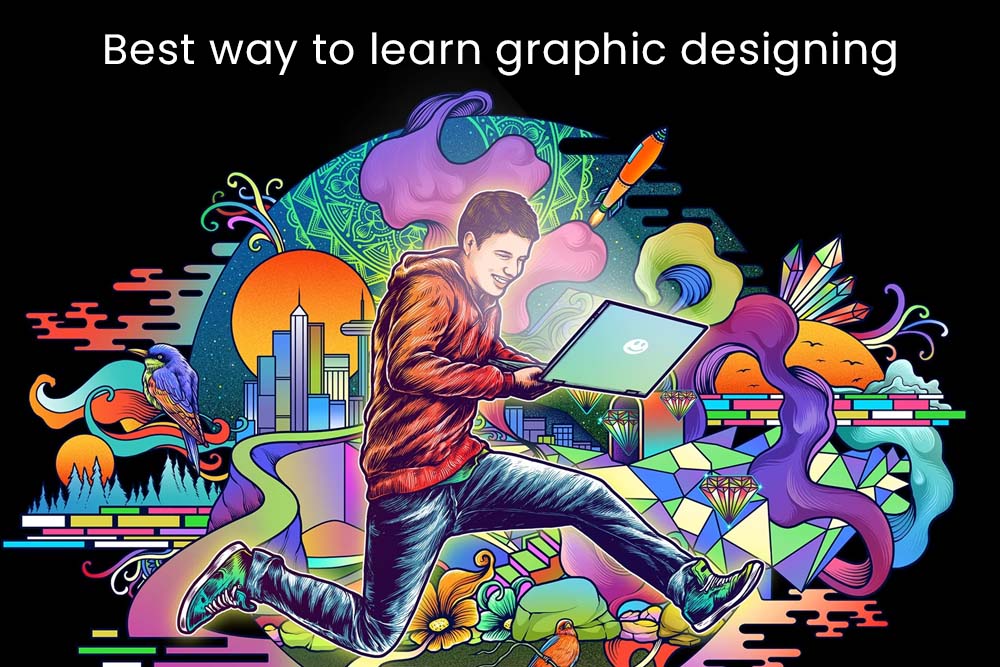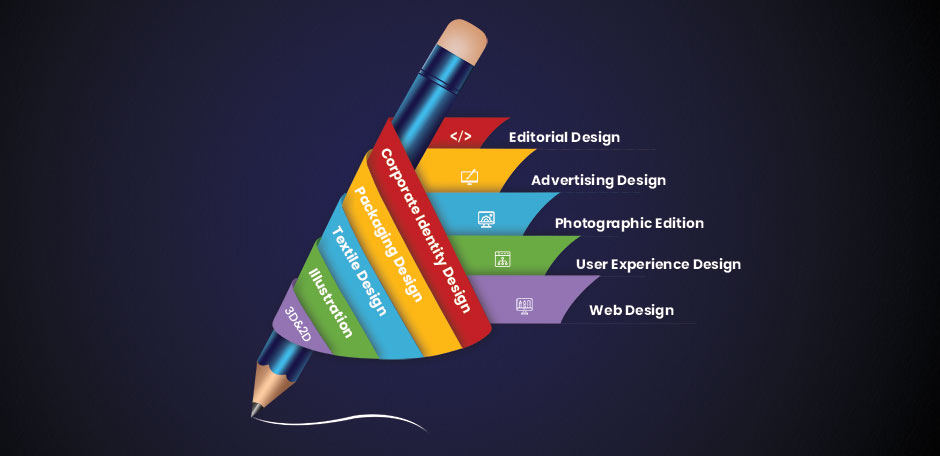Learning graphic design is an art and science. Designers need to be aware of the latest trends in the industry, understand color theory, typography, layout, and other various elements. Learning graphic design is not just about learning how to use the tools. It’s an iterative process that involves drawing skills, visual thinking skills, creativity skills and analytical thinking skills.
The graphic design industry is a very lucrative one. The demand for graphic designers has been going up over the years, and there is a lot of competition in the field. If you are interested in this field, it is important to know what the process of learning graphic designing entails.
The graphic design industry has evolved over time and it’s important to note that there are various ways to learn this skill.
After the Industrial Revolution, the printing press changed the way we communicate and how we do business. Nowadays, with computers and digital technology, we can create and produce graphics in a variety of formats.
There are multiple methods for learning how to design graphics, but the best way is through trial-and-error or by taking a class from an accredited institution or from a professional designer.
Best Ways to Learn Graphic Design
1- Grab The Fundamentals
- Grid Systems:
A grid system in graphic design is a method of aligning elements in a layout.
A grid system is made up of a series of vertical and horizontal lines that divide the work area into modular units. The central module is the “carrier” or “cell,” which holds all or some of the other modules. Grids are very versatile and may be applied to different shapes, sizes, ratios, etc
Grid systems are a way to provide a framework for layout, typically used in graphic design. They are typically made up of columns and rows, with the latter being determined by the width of the page.
Grid systems can be simple or complex. A simple grid system would be to have four columns with content in three of them and one column left blank. The most common and basic grid system is a three column web layout: header, content, and footer – each having different proportions for widths and heights depending on the site’s needs.
- Color Theory:
The purpose of color theory is to help people understand and apply color in a way that expresses their own ideas and emotions.
Color theory is the study of how colors work with one another.
The most basic function of color theory is to ensure that when two colors are combined they create a visually pleasing result.
However, it can also be used in different ways such as:
-to make an object look more attractive;
-to make an object look distinct; or,
-to produce a reaction in the viewer (such as fear or happiness).
- Form and Texture:
Form is the three-dimensional or two-dimensional space in which an object or figure is set. It creates the shape of the object. The form of a graphic design is what gives it its final appearance, including size, shape, color and texture.
Texture is how a surface feels under pressure. Different textures can be created in graphic designing by varying the brush size, changing the spacing between brush strokes, or using different kinds of brushes in Photoshop or Illustrator.
The goal of texture when it comes to graphic designing is to create depth with light and shadow effects on both surfaces and objects.
The most important consideration in any project when it comes to form and texture are color theory and lighting theory.
- Shapes and Space:
Graphic design is the art and process of integrating text information with visual elements to generate a graphic representation. Graphic designers use this integrated approach to convey a message or idea by using graphics. There are two fundamental shapes in graphic designing – rectangular and triangular. Rectangular shapes are used for banners, logos, branding, etc. while triangular shapes have been used in advertising for a long time to create a sense of movement and dynamism.
The basic goal of space in graphic design is to create a balance between the two dimensions of the piece. An image should never be placed too close to the edge or it will look cramped and tight. It can be placed at an angle or overlap another element on the page instead if it needs more space.
2- Get Well Versed in Design Terminology
It is vital for any graphic designer to be well versed in design terminology. It allows them to communicate more effectively with other designers, share their ideas and get feedback from clients.
Design Terminology:
Visual hierarchy: categorizing objects by size, type, color, etc. Objects that are most important are placed at the top of the page while objects that are less important are placed at the bottom or around the periphery of the page.
Gestalt psychology: Gestalt psychology is the psychology of perception. It has been used for designing websites with emphasis on the user experience.
Gestalt psychology is a theory of perception that holds that the whole of our experience can be seen as an analog synthesis (or gestalt) which makes sense of different sensations by unifying them with one another. Gestalt psychologists believed that people are more than just sensations and perceptions; they are holistic beings who act with meaning and understanding.
Typography: the art and craft of making letters and words attractive when they are displayed on a page or screen.
Typography is the art and technique of arranging type in order to make a readable document.
Fonts, spacing, letter size, line spacing, color and other visual elements are all examples of typography. Typography is a very important part of graphic design because it can convey a message or atmosphere with just a few words.
There are many different types of typography such as serif, sans serif and script. Serif fonts typically have small lines at the end of their strokes while sans serif fonts do not have these lines. Script fonts are typically ornate and decorative while monotype fonts are used for large blocks of text like magazines and newspapers.
What are good sources to learn graphic designing?
Graphic design is a creative process that relies on the selection and arrangement of typography, images, or both to communicate a message or to get across an idea. In this post we will cover some of the best online sources for learning graphic design.
Some of the best places to learn graphic design are:
Lynda:
Lynda.com is a video tutorial website that offers courses on software and design skillset, with the premium and pro subscriptions providing access to all courses and new releases.
The premium subscription costs $25 per month or $180 per year, while the pro subscription costs $35 per month or $420 per year. Lynda offers a free 7-day trial for those who want to try it before committing to a monthly plan.
Udemy:
Udemy is an online platform for learning and teaching about a wide range of topics, from business to music and everything in between.
Udemy is an online platform that teaches people about various topics such as design, marketing, etc. Udemy offers courses on a variety of subjects such as web development, graphic design, photography and more.
Users can buy courses on Udemy with either a monthly or yearly subscription. Once they purchase the course they can access it anytime and as many times as they want. Courses come in the form of videos with captions accompanied by transcripts with timings for each lesson.
Some of the best features offered by Udemy are:
- no time limits on courses
- you can watch them over and over again
- certificates provided at the end of each course
CreativeLIVE:
CreativeLIVE is the world’s leading online education platform for graphic designers. It hosts live, interactive, video-based courses on design, creativity and business.
CreativeLIVE is a community of creatives who are hungry to learn and grow in their creative careers. We are passionate about creativity at every level of the creative process, whether it’s about discovering your next great idea or mastering techniques that will take your work to the next level.
The world’s most renowned professionals come to CreativeLIVE to share their knowledge with you. Not only do they teach you how to be better designers, but they also teach you how make a living doing what you love most.
YouTube:
YouTube is a social media site and video platform which allows users to upload, share and view videos.
YouTube is a website where users can upload, share and view videos on their platform. It has more than one billion active monthly users across the world on its platform who are uploading more than 400 hours of video every minute. YouTube is available in 87 different languages.
YouTube was created on February 14th, 2005 by three former PayPal employees – Chad Hurley, Steve Chen, Jawed Karim who were also responsible for creating PayPal together with Peter Thiel.
The YouTube platform is a video sharing website that enables its users to upload their videos and share them with other people in the world. It has a lot to offer in terms of graphics designing tutorials. YouTube also makes it easy for designers to showcase their work, get feedback from viewers and make money from the ads that are found on their videos.
There are many sources to learn graphic designing and it depends on one’s interest and resources. One can learn Graphic design by:
1) attending a course at a university or college
2) taking up online courses
3) reading books on graphic design
4) doing freelance work




